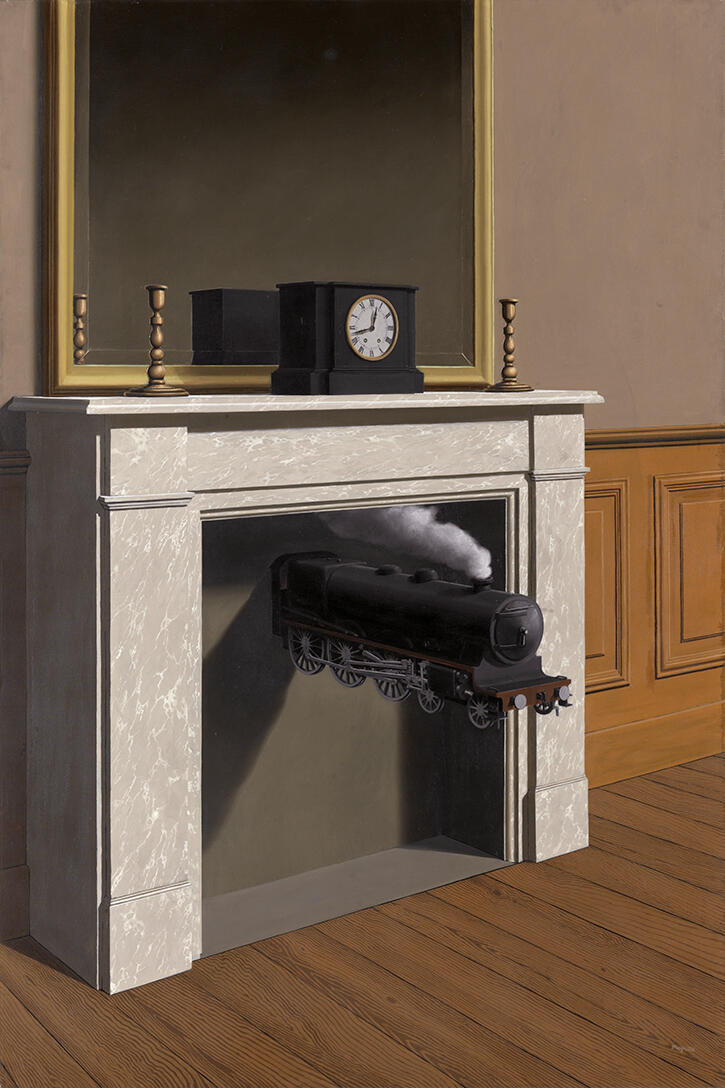Tate Modern’s Reimagining of International Surrealism
‘Surrealism Beyond Borders’ is a comprehensive overview of one of the 20th century’s most influential movements
‘Surrealism Beyond Borders’ is a comprehensive overview of one of the 20th century’s most influential movements

A map first published in 1929, Le monde au temps des surréalistes (The World in the Time of the Surrealists), reflects the original French surrealist group’s commitment to communism and anti-imperialist struggles; for example, it enlarges the Soviet Union and shrinks the US, with a hugely swollen Ireland dwarfing a tiny Britain. However, as the accompanying wall text at Tate Modern’s expansive ‘Surrealism Beyond Borders’ exhibition tells us, the surrealists – and artists who ‘intersected’ and ‘aligned’ with the movement – did not transcend colonial thinking. Instead, their search for the uncanny in everyday life sometimes led them to fetishize indigenous cultures, with their evaluations made primarily from a European perspective.

The show’s curators, Stephanie D’Alessandro and Matthew Gale, have deliberately decentralized the movement, with André Breton, the author of Manifeste du surréalisme (Surrealist Manifesto, 1924), warranting only an occasional mention. Despite Breton’s autocratic control over membership of its French wing, surrealism moved far beyond his jurisdiction, with groups in Portugal, Yugoslavia, Egypt and elsewhere, and surrealist-adjacent artists working in Cuba, Japan, Mexico and Martinique. The most famous surrealist works are largely absent, although Salvador Dalí’s Lobster Telephone (1936) is here, alongside René Magritte’s instantly recognizable Time Transfixed (a 1938 painting of a train chugging out of a fireplace on invisible tracks). Otherwise, the exhibition puts artists marginalized within surrealist histories – especially women, given the French group’s tendencies towards misogyny and homophobia – on an equal footing with familiar surrealist names. It also places work by artists such as Frida Kahlo, Wilfredo Lam and Roberto Matta in a surrealist context, playing up Breton’s interactions with Diego Rivera and Leon Trotsky, and the Spanish surrealists who fled to Mexico during the Civil War (1936–39).

The decision to emphasize the differing political contexts of certain surrealists is welcome, especially given how the movement became depoliticized as the advertising industry realized the commercial potential of its powerful imagery. For example, the Lisbon group made works as a challenge to Portugal’s fascist dictator, António de Oliveira Salazar (but lasted just two years of a reign that extended more than three decades); and Jan Švankmajer’s short film The Flat (1968) is presented as a response to the Soviet occupation of Czechoslovakia. Other artists reacted to the movement’s orthodoxies. Reassessed in recent years as proto-trans works, Claude Cahun’s androgynous photographic self-portraits from the 1920 to ’40s complicate the gender norms of surrealism (often expressed by the naked female torso being prominently featured). The Egyptian group was inspired by Breton and Trotsky’s 1938 manifesto, Pour un art revolutionnaire (Towards a Revolutionary Art), which called for international unity to defend artistic freedom, incorporating local motifs into their anti-colonial art. And Inji Aflatoun’s La jeune fille et le montre (The Young Girl and the Monster, 1942) is a nightmarish inversion of Dalí’s The Persistence of Memory (1931), with dark browns replacing Dalí’s optimistic sky blues, and a pair of melting faces hinting at the conflict between two imperial powers.

The break-out star of ‘Surrealism Beyond Borders’ is African American poet, musician and artist Ted Joans, who engaged with surrealism after a chance meeting at a bus stop with Breton in Paris in 1960. Joans created Long Distance Exquisite Corpse (1976–2005), a long chain of drawings and collages produced by playing a version of the famous surrealist drawing game. It’s a shame that the work of the chaotic and violent collective Movement panique (Panic Movement), founded in 1962 in response to surrealism becoming mainstream, does not feature – and a coda exploring surrealism’s influence on contemporary art would also have been enlightening. That said, this exhibition still constitutes an astonishingly comprehensive re-imagining of one of the most influential art movements of the 20th century.
‘Surrealism Beyond Borders’ is at Tate Modern, London, until 29 August 2022
Main image: Kaveh Golestan, Untitled (detail), from ‘Az Div o Dad’ series, 1976. Courtesy: © Kaveh Golestan Estate, Courtesy Archaeology of the Final Decade






















